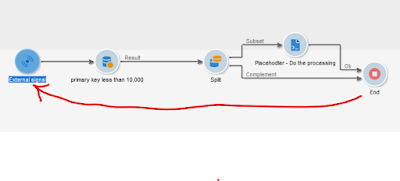Campaign classic sequence of execution of different Javascript Code Bloc inside a workflow delivery

Every time I have to add some advanced JS code inside Delivery I am confused about the sequence of JS. When it comes to Delivery, then there are multiple places where you can write the JS Right Click on Delivery > Open > Go to Script Tab Right Click on Delivery > Open > Go to Advanced Tab Typology Rule of type Control There are many phases where the rule will be run. I was trying to run the rule as much late as possible and thus had chosen "At the end of the analysis" Ignoring the option of adding JS code inside the Routing External account > Connector and Post processing workflow as I didn't run that Here is the result While the delivery is waiting at "Approve Targeting" , the log for the recurring delivery activity at workflow level looks like below The delivery log looks like below for the Typology Rules Note: At this stage the broadlog is not created and that makes sense as the Targeting is not approved yet While the delivery is waiting at


